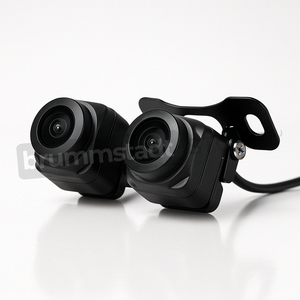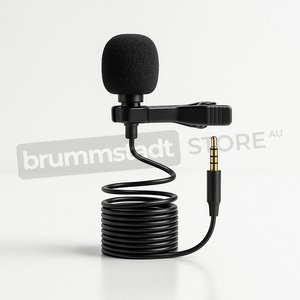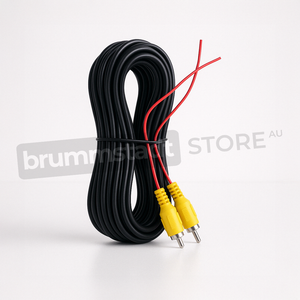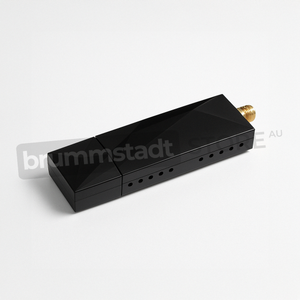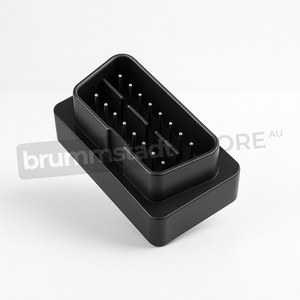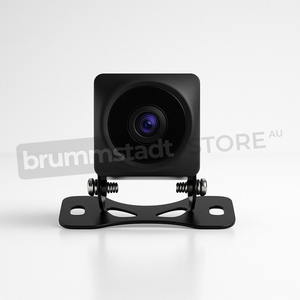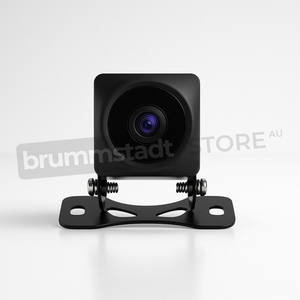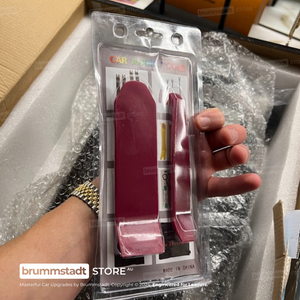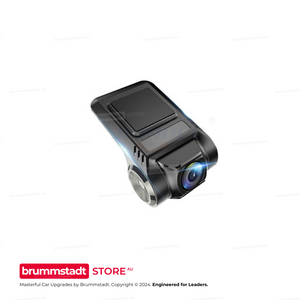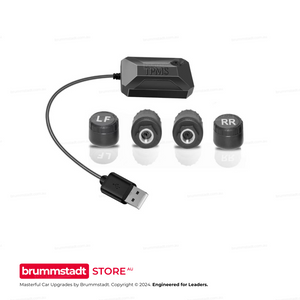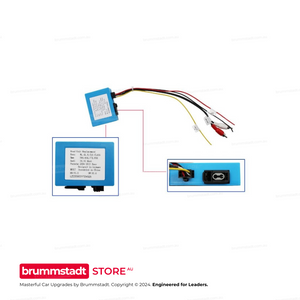Frequently Asked Questions
Everything you need to know about this head unit
Connect the single RCA cable with the yellow plug (included in your package) to extend your Bluetooth signal. This cable doubles as both a camera input AND a Bluetooth/WiFi antenna extension. The two small blue wires attached are antenna boosters that significantly improve connection stability. This simple connection takes 30 seconds and resolves 90% of Bluetooth issues. Make sure it's firmly connected even if you're not using a rear camera.
Try these proven solutions:
1. Quick Fix: Settings → Apps → Z-Link → Disable → Enable → Open (repeat each use)
2. Check Cables: Use the data/charge USB cable (not charge-only)
3. Bluetooth Setting: Disconnect all other Bluetooth connections - CarPlay needs exclusive access
4. Factory Reset Z-Link: Find the pink 'RESET' app, restart, reconnect Bluetooth, then try Z-Link
5. Sound Issues: Switch audio source to 'AUX' or 'USB/AUX' in your vehicle menu
Most issues are resolved with step 1 or 3!
The processor differs between models: The 2/32GB has a 4-Core processor, while 4/64GB and 8/128GB models feature the powerful 8-Core Cortex-A55 processor. Combined with RAM differences: The 2/32GB model with its 4-Core processor and limited RAM may experience slowdowns with heavy multitasking. The 4/64GB with 8-Core provides smooth performance for most users - no lag, seamless app switching, and enough storage for maps and music. The 8/128GB with 8-Core offers maximum performance with its generous RAM allowing unlimited multitasking and massive storage for extensive media libraries. Think of RAM like your desk space - more RAM means you can have more apps open simultaneously without slowing down.
Absolutely normal! These head units are complete replacement systems with their own GPS antenna, microphone, and Bluetooth module. Your factory connectors for these features won't be needed anymore. The important connections are: main power harness, speaker outputs, and the yellow RCA cable (even if not using a camera - it extends Bluetooth range). Any leftover factory plugs can be safely tucked away. If you're unsure about any connection, our support team is here 7 days a week.
Z-Link updates are handled through system firmware updates. Go to Settings → System → System Update. If an update is available, download it to a USB drive (FAT32 format) and install. Important: Never download Z-Link APKs from unofficial sources - they won't work and may cause issues. If you're having compatibility issues with newer iOS versions, the disable/enable workaround (Settings → Apps → Z-Link) usually resolves them while waiting for official updates.
Consider your usage:
• 2/32GB (4-Core): Budget option - fine for basic use, but may lag with multiple apps due to 4-Core processor and limited RAM
• 4/64GB (8-Core): Sweet spot - smooth Android Auto/CarPlay, multitasking, and ample storage
• 8/128GB (8-Core): Premium choice - unlimited multitasking, massive storage, future-proof for years
Most customers choose 4/64GB for the perfect balance of performance and value. The extra RAM makes a huge difference in daily smoothness!
The yellow RCA cable's blue antenna wires also boost WiFi signal! Make sure this cable is connected. Additionally, try these tips: Position the blue antenna wires away from metal surfaces, check that your phone's hotspot is set to 2.4GHz (not 5GHz) for better range, and ensure the head unit's WiFi sleep policy is set to 'Never' in Settings → WiFi → Advanced. For best performance with wireless CarPlay, keep your phone within 1-2 meters of the head unit.
Go to Settings → Sound → Equalizer and adjust to your preference. For more volume, increase the 'Loudness' setting. The 4/64GB and 8/128GB models have superior audio chips that provide cleaner, louder sound. If you have an amplifier, use the RCA outputs for best quality. Also check Settings → Factory Settings (password usually 126) → Audio settings for additional gain controls. Remember: higher-spec models (4GB+) include premium audio components for noticeably better sound.
Yes! Most vehicles work instantly. If not, use the steering wheel learning app: tap the steering wheel icon, press each button on your wheel, and assign functions. For newer vehicles with CANbus, we provide CANbus modules for automatic setup. Some vehicles may need the Key1/Key2 wires connected (usually included in our harness). If you're having trouble, let us know your exact vehicle model and we'll provide specific instructions.
We offer a 30-day return policy. If it doesn't fit or there's a compatibility issue, we'll work with you to resolve it. If you change your mind, a 20% restocking fee applies. Our team verifies compatibility before shipping to minimize issues. We provide installation support 7 days a week to help resolve any problems. With our 3-year warranty and Australian-based support, you can purchase with confidence. Full details in our Refund Policy.
Historical Context and Evolution of the Land Rover Range Rover Sport:
Land Rover Discovery-Based Concept Origins (2005–2009 - L320 Generation):
Prior to the Range Rover Sport’s global launch in 2005, Land Rover primarily focused its attention on traditional luxury SUVs, defined prominently by the full-sized Range Rover and the utilitarian Discovery. The inspiration behind the Range Rover Sport derived strongly from the desire to craft a more agile, road-oriented vehicle, while ensuring that Land Rover’s expertise in tough terrain remained uncompromised. Built on the L320 platform, closely related to the Discovery 3 (LR3 in North America), the Range Rover Sport brought with it an enhanced sporting edge and a noticeably more assertive aesthetic presence.
The silhouette briefly featured sleeker rooflines and a lower, more aggressive stance, immediately differentiating itself from the conventional upright profiles of older siblings such as the Range Rover flagship or Discovery lineup. Early designs balanced aerodynamics with classic Land Rover styling cues, including polished grille designs, signature front lamps, robust alloy wheels, and refined interior appointments occasionally surpassing even its larger counterparts.
During the model years 2006-2009, the Range Rover Sport earned acclaim notably through its blend of technology, driving capability, and overall refinement. Available powertrains catered to varied tastes, from the potent, naturally aspirated 4.4-litre V8 version offering composed strength and durable reliability, to the supercharged 4.2-litre V8 model, instantly recognizable by its performance-inspired handling and impressive output. Discerning drivers lauded the supercharged variant’s brisk acceleration, characterful exhaust note, and seamlessly responsive power delivery.
Interior quality showcased thoughtful craftsmanship with high-grade soft-touch materials, luxurious leather finishes, precise stitching, and authentic wood trim or brushed aluminum accents—creating a comfortable cabin that fostered authentic prestige. Land Rover further differentiated the Range Rover Sport with practical features including terrain-response settings, adaptable suspension systems, and intuitive seating arrangements, ensuring quintessentially British luxury was always accompanied by uncompromised ruggedness.
Global Variations and Market Differences:
Although internationally consistent in name and appearance, equipment and variant offerings revealed subtle market differences. In Europe, Australia, and the UK, drivers favored diesel variants such as the highly regarded TDV6 and TDV8 models for their stronger torque and economic advantages in fuelling and taxation, whereas the North American market predominantly opted for petrol engines, with the luxurious Supercharged variant becoming particularly cherished among urban and suburban clientele.
Brummstadt Integration and Enhanced Driving Utility:
As effective and reliable as the factory installations from the period were, automotive technology advanced considerably since 2006-2009. A suitable aftermarket head-unit upgrade from Brummstadt emerges as a relevant choice today, aiming particularly at Range Rover Sport drivers seeking contemporary technology within the original dashboard’s aesthetics.
This premium infotainment upgrade is curated specifically for the Land Rover Range Rover Sport from the early L320 generation, naturally integrating powerful new capabilities into the vehicle without disrupting original design harmony. Key among its functionalities is full wireless and wired support for Apple CarPlay and Android Auto, quickly introducing the conveniences and features drivers routinely enjoy via smartphones.
Everyday navigation becomes intuitive with common applications including Google Maps, WAZE and Apple Maps smoothly used via integrated smartphone connectivity. Consider an evening outing scenario—a leisurely family dinner in a bustling restaurant, after which the journey continues spontaneously to visit friends. Destination details added ahead into the smartphone’s map application appear immediately upon vehicle entry, thanks to seamless connection through wireless Apple CarPlay/Android Auto—ensuring comfort and simplicity throughout the journey.
Additional Security, Convenience, and Entertainment:
Brummstadt's solutions accommodate further valuable enhancements, such as a discrete installation of high-definition 1080p front and rear cameras, delivering important practical benefits: improved maneuvering visibility and documented records in the event of unexpected occurrences. Furthermore, these bespoke infotainment installations notably cater to passengers by enabling USB-connected joysticks for in-car multiplayer gaming. Thus, lengthy family journeys transform from mere mileage into memorable shared experiences.
Accompanying such advanced connectivity features are thoughtful smart home integration solutions. Using intuitive voice commands through Siri or Google Assistant on this head unit, the vehicle becomes an extension of a driver's lifestyle beyond ordinary transport roles—for instance conveniently instructing home automation controls such as enabling or disabling exterior lights or adjusting thermostat settings as one approaches home.
Overall Vehicle Advantages and Driving Experience:
The Land Rover Range Rover Sport from the years 2006-2009 delivers substantial value, recognized particularly in handling experience, advanced off-road capabilities, enduring refinement, unmistakably elegant styling, prestigious driving comfort, strong performance credentials, and interior spaciousness.
By thoughtfully choosing modern technology and connectivity accessories that respond to contemporary realities, drivers amplify the existing merits inherent in their luxurious sport vehicle. Such carefully selected accessories inherently improve everyday practicality, navigation convenience, entertainment experiences, driver safety, and convenience. Embodying Land Rover’s original ambition, yet vastly progressing forward, embracing today’s expectations of connected comfort becomes respectfully attainable.
As the Range Rover Sport gracefully preserves its inherent qualities that first earned admiration—its resilient soul, refined luxury, assured off-road prowess, and dynamic road performance—integrating innovative accessories ensures these significant Land Rover qualities remain relevant, practical, and continually rewarding.














